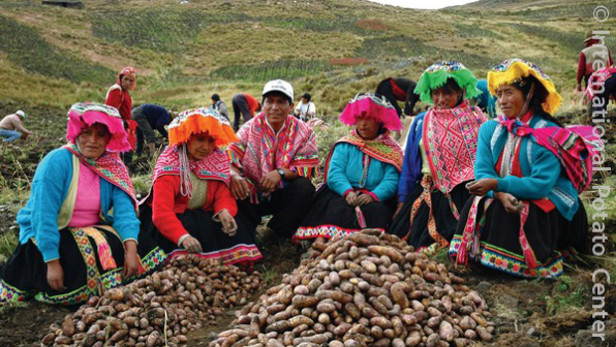In my role as director general of the International Potato Center — or CIP — I’d like to tell you that this underground movement has to do with potato and sweet potato. But more importantly, it has to do with how these crops and others interact with each other and their impact on food security and the environment globally.
To take on the issues we face with climate change, population growth, urbanization, shortages of water and other natural resources, organizations like CIP, the Consortium of International Agricultural Research Centers and the private sector must combine their best thinking and create integrated approaches to improve food security and nutrition on a global scale.
For instance, take the case of India. Vast rural farming networks have evolved to take advantage of impressive gains in rice production systems that have ensured the food security of millions. However, growing environmental vulnerability and rapid urbanization are challenging centuries-old agricultural practices and dependencies. Many of the country’s farming states are some of the lowest lying and most at risk to the extremes of climate change. Problems arising from planting just one crop — such as poor irrigation practices — have compromised the quality of arable land and dramatically lowered the national water table. Frequent droughts and flooding have increased salinity, degrading soil quality further. Population growth over the next few decades will continue to be concentrated in cities, and precious farmland will increasingly be lost to roads and buildings to accommodate urban spread.
How do we deal with the uphill struggle facing a country like India? Our answer is to help Indian farmers introduce a new potato variety that is tolerant to heat and drought, and has short 70-to-90-day cycles. By introducing a short-cycle potato between two cereal harvests, for example, rice or maize, farmers have a backup crop in case one cereal harvest fails and an income generator when harvests thrive.
Participating farmers receive technical support and “clean” or disease-free potato seed at a subsidized rate, helping to increase yields and production. CIP then works with project partners to provide technical training, better access to organized marketing linkages and assistance with improved post-harvest handling and storage to extend potato’s shelf life and marketability.
Of course, introducing a short-cycle potato will affect the cereal-growing season by pushing one planting season to earlier in the year, and a subsequent planting season to later in the year. CIP will have to team up with our sister centers — the Philippine-based International Rice Research Institute and the International Maize and Wheat Improvement Center in Mexico — to ensure that the proper varieties are sown and grown using proper farming techniques. National, state and local governments and ministries must also be engaged to ensure the success of these projects.
However, even these two CGIAR centers and a government ministry cannot do it alone. I believe we should enter into partnerships with private sector players who have a commitment to mitigate the negative impact of climate change and population growth, as well as an interest in engaging the local economies of these poor areas of the world in socially responsible ways. No doubt, these players will have business motives too — as they well should — but those should not be at the expense of small-holder farmers, and these partners must have strengths in research or dissemination, for example that will accelerate the benefits at the community level. Otherwise, we will take on these efforts ourselves.

Harvested potatoes in Peru. The International Potato Center works with the public and private sectors in
developing countries to help small-holder farmers and their communities. Photo by: CIP / CC BY-NC-SA
As a publicly funded organization, CIP and CGIAR use that funding to benefit ultimate end users: the small-holder farmers and the communities where they live.
By fostering interaction between centers like CIP and private sector partners, we can accelerate the development and dissemination of improved disease-free varieties benefiting by the economies of scale that industry provides. Industry benefits from revenues and expanded market reach, among other things, for a limited period of time. Finally, as small-holder farmers receive quality planting material, that increases their income and the nutrition and food security of their communities.
Through leveraging the combined expertise and reach of its 15 centers and advocating for the small-holder farmer, CGIAR is positioned as an influential global player that can achieve real and lasting food security in our lifetimes.
Source: Devex.com
